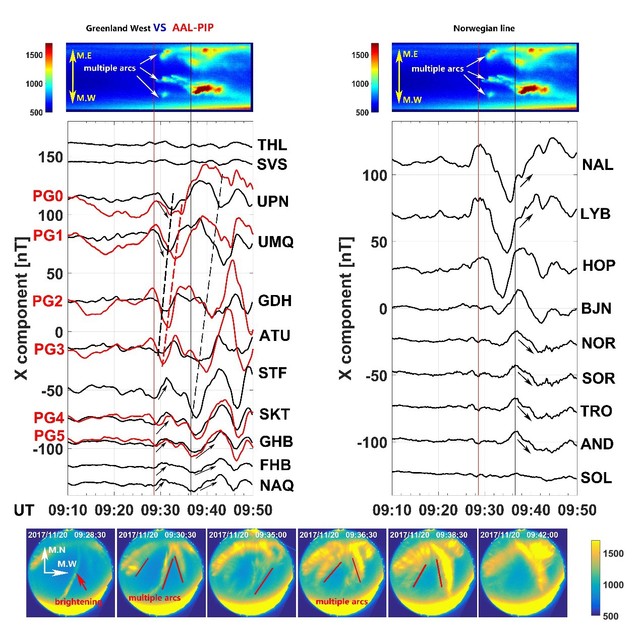Huiting Feng1, Desheng Han1, Xiangcai Chen2, Jianjun Liu2, Zhonghua Xu3
1State Key Laboratory of Marine Geology, School of Ocean and Earth Science, Tongji
University, Shanghai, China
2 MNR Key Laboratory for Polar Science, Polar Research Institute of China, Shanghai, China
3 Bradley Department of Electrical and Computer Engineering, Virginia Tech, Blacksburg, VA24061, USA
Abstract
Throat auroras frequently observed near local noon have been confirmed to correspond to magnetopause indentations, but the generation mechanisms for these indentations and the detailed properties of throat aurora are both not fully understood. Using all‐sky camera and magnetometer observations, we reported some new observational features of throat aurora as follows. 1) Throat auroras can occur under stable solar wind conditions and cause clear geomagnetic responses. 2) These geomagnetic responses can be simultaneously observed at conjugate geomagnetic meridian chains in the Northern and Southern Hemispheres. 3) The initial geomagnetic responses of throat aurora show concurrent onsets that were observed at all stations along the meridians. 4) Immediately after the concurrent onsets, poleward moving signatures and micro positive bays were observed in the X components at higher‐ and lower‐latitude stations, respectively. We argue that these observations provide evidence for throat aurora being generated by low‐latitude magnetopause reconnection. We suggest that the concurrent onsets reflect the instantaneous responses of the reconnection signal arriving at the ionosphere, the followed poleward moving signatures reflect the anti‐sunward dragging of the footprint of newly opened field lines, and the micro positive bays may result from a pair of field‐aligned currents generated during the reconnection. This study may shed new light on the geomagnetic transients observed at cusp latitude near magnetic local noon.
Full Article:https://agupubs.onlinelibrary.wiley.com/doi/abs/10.1029/2020JA027995



